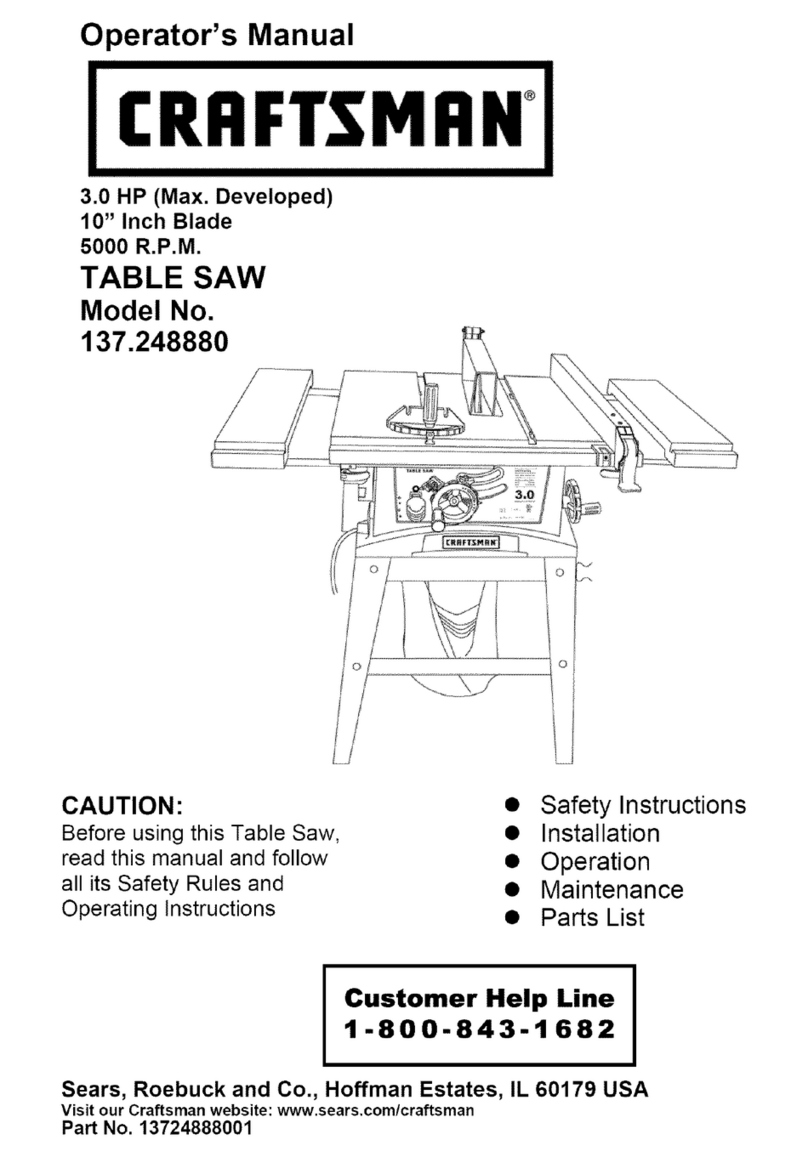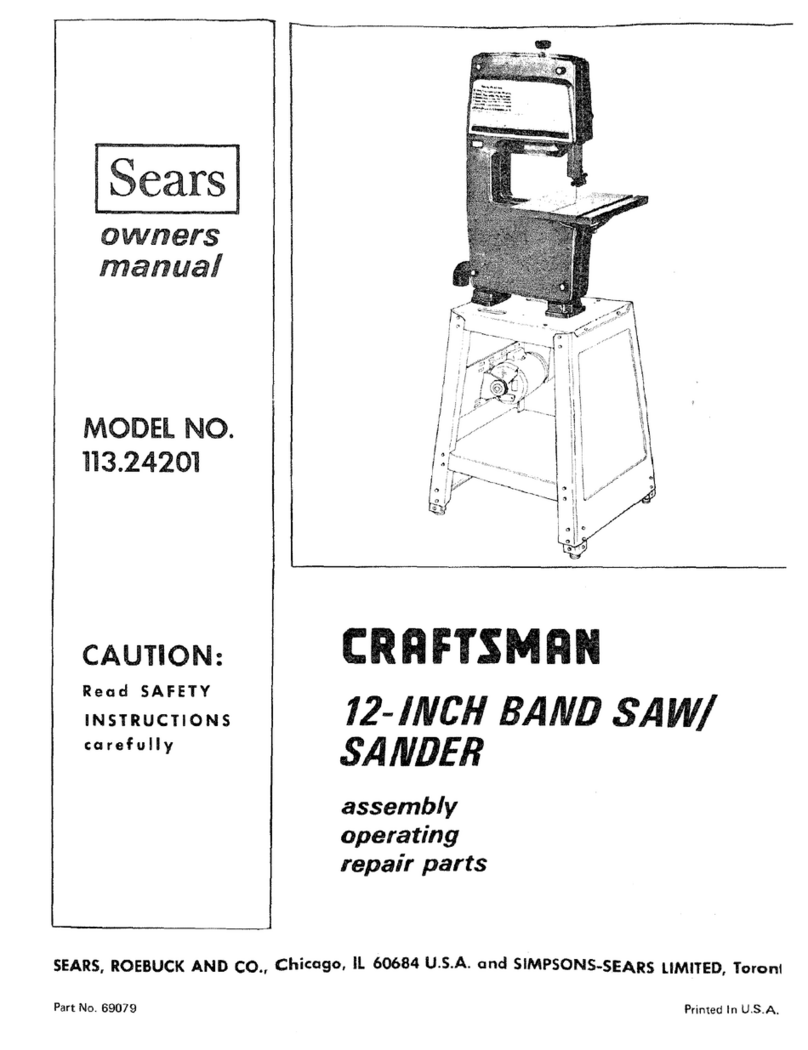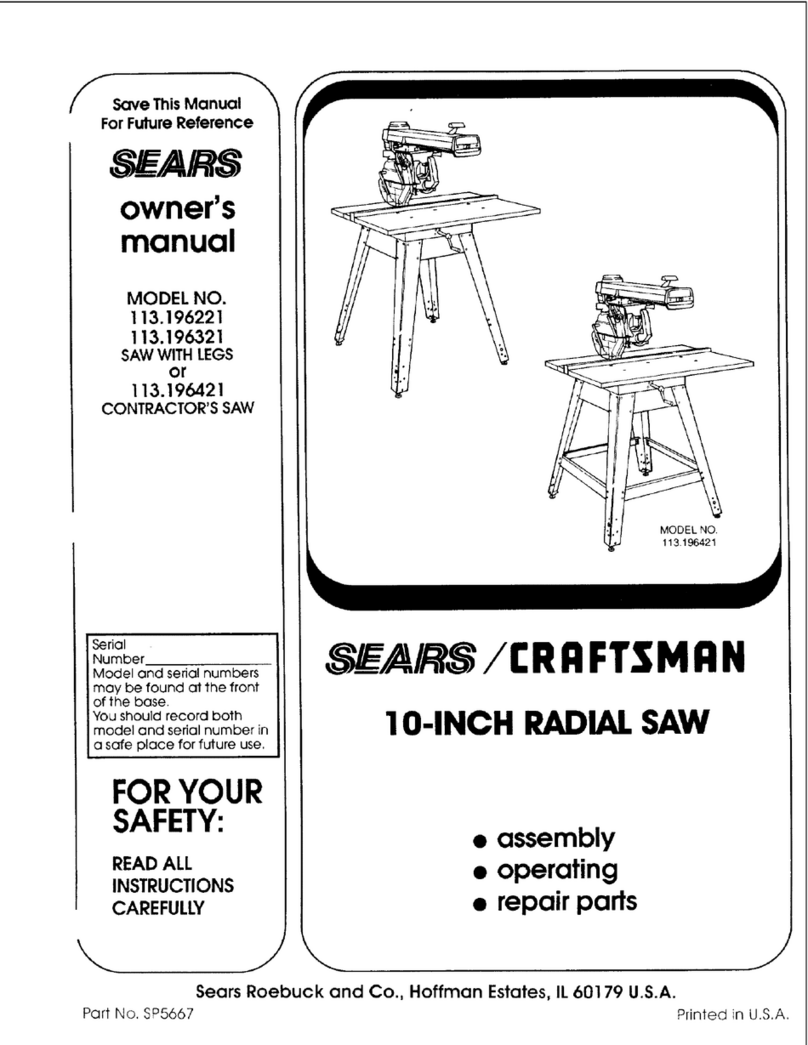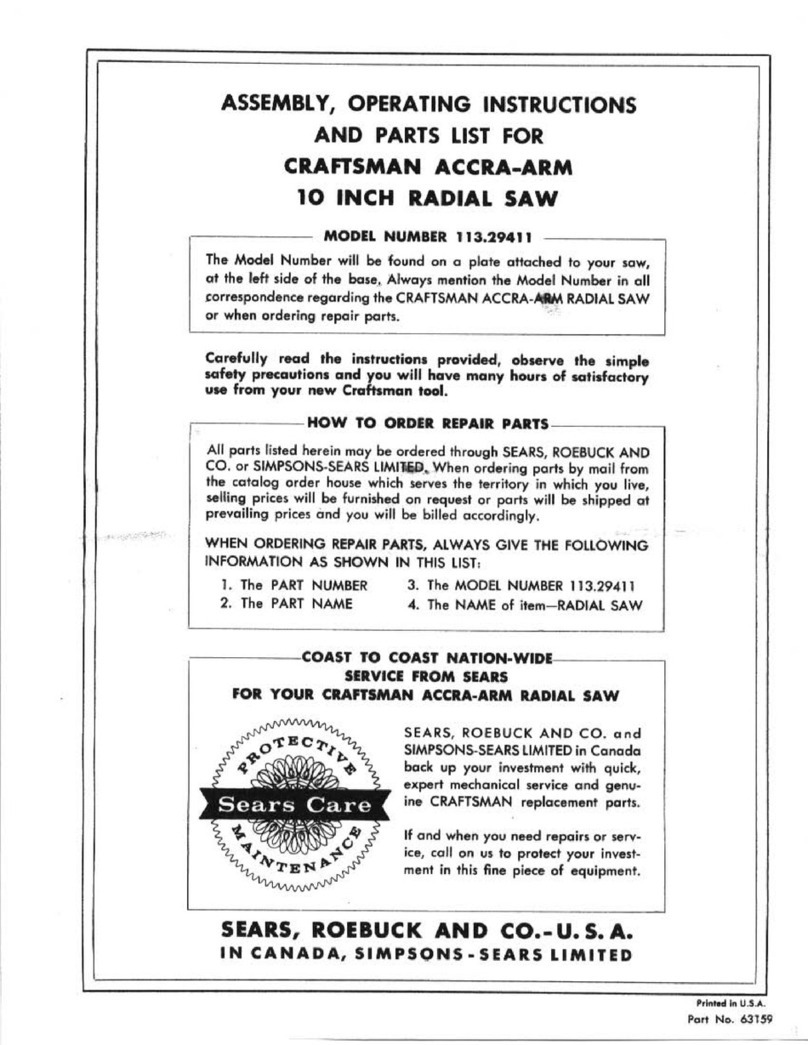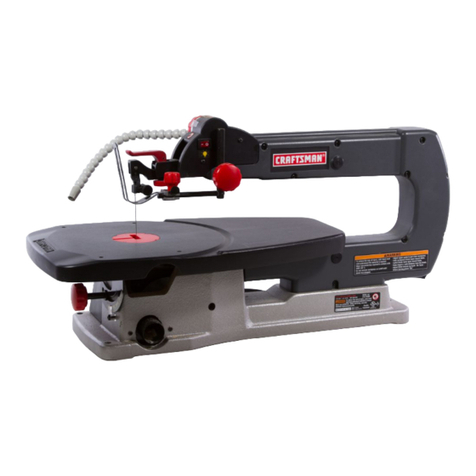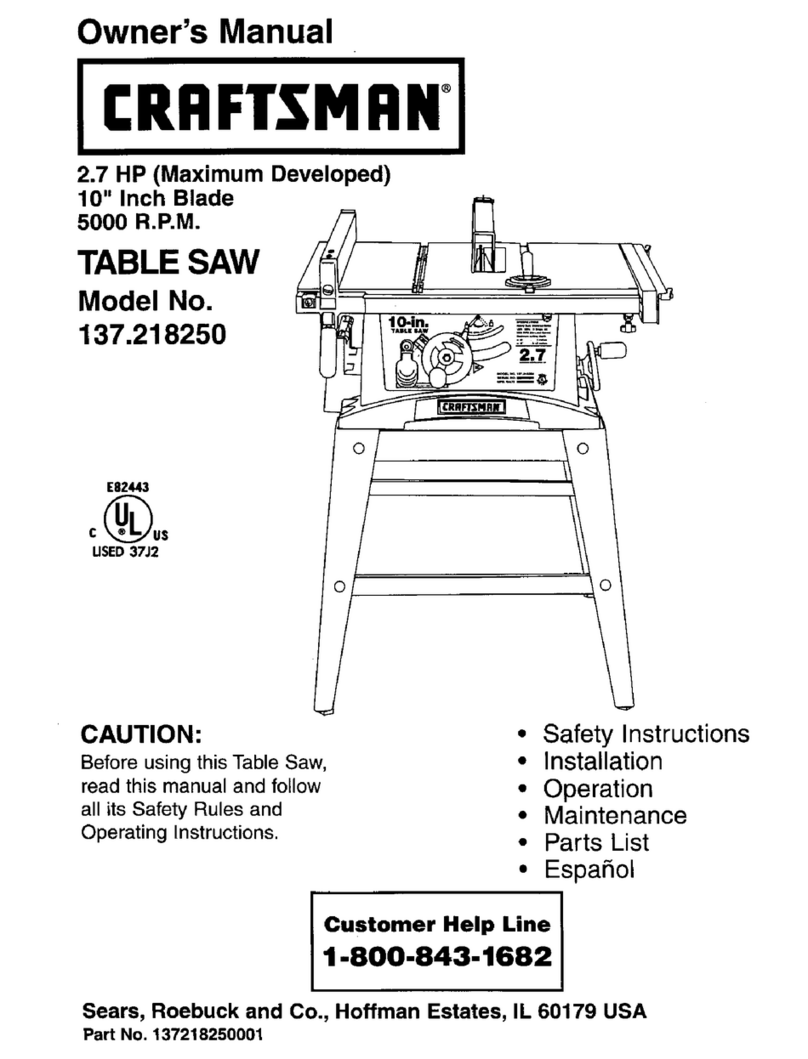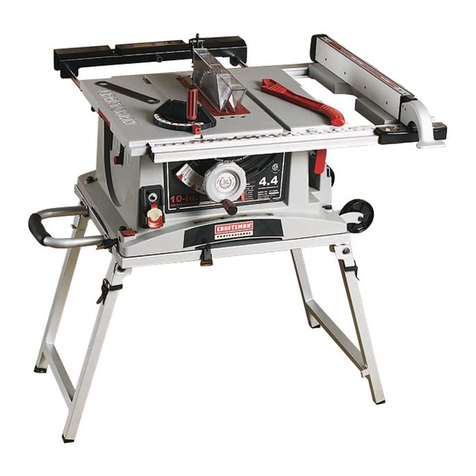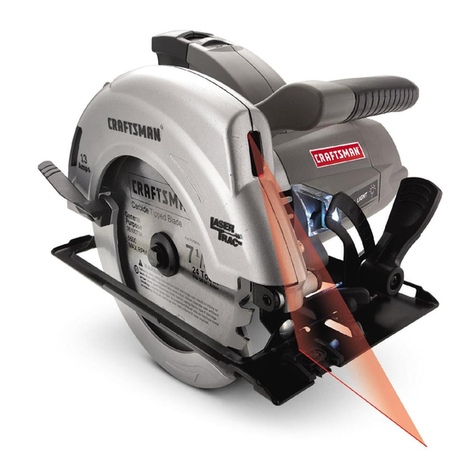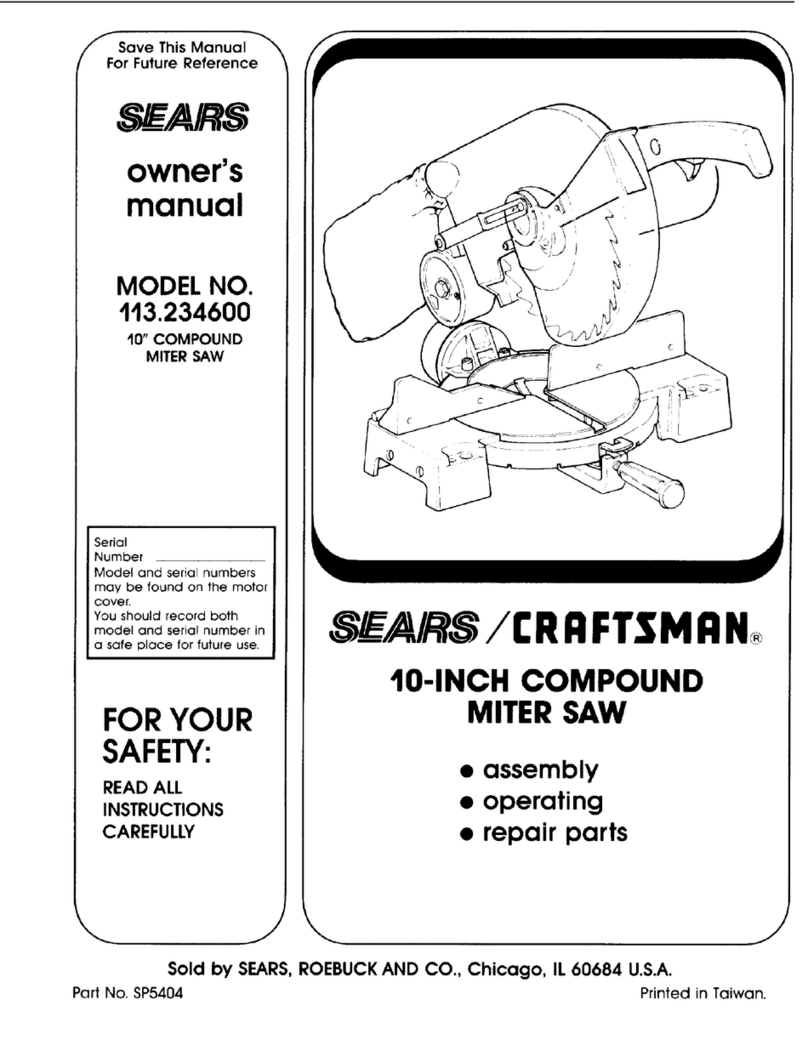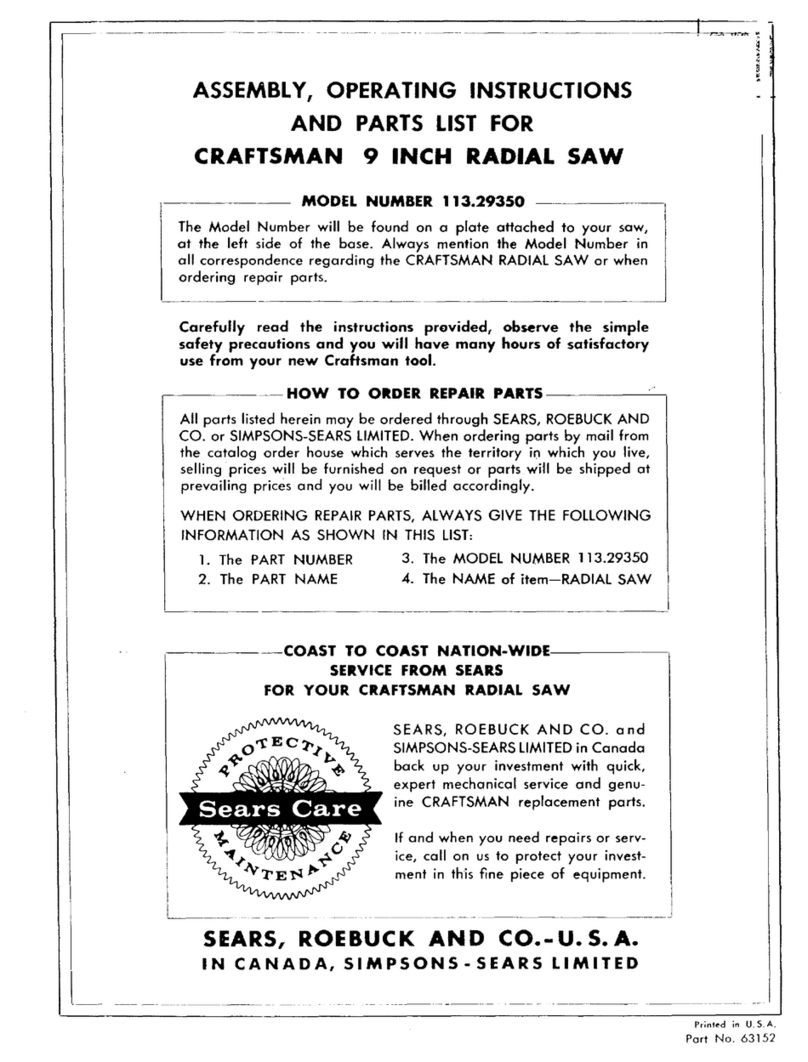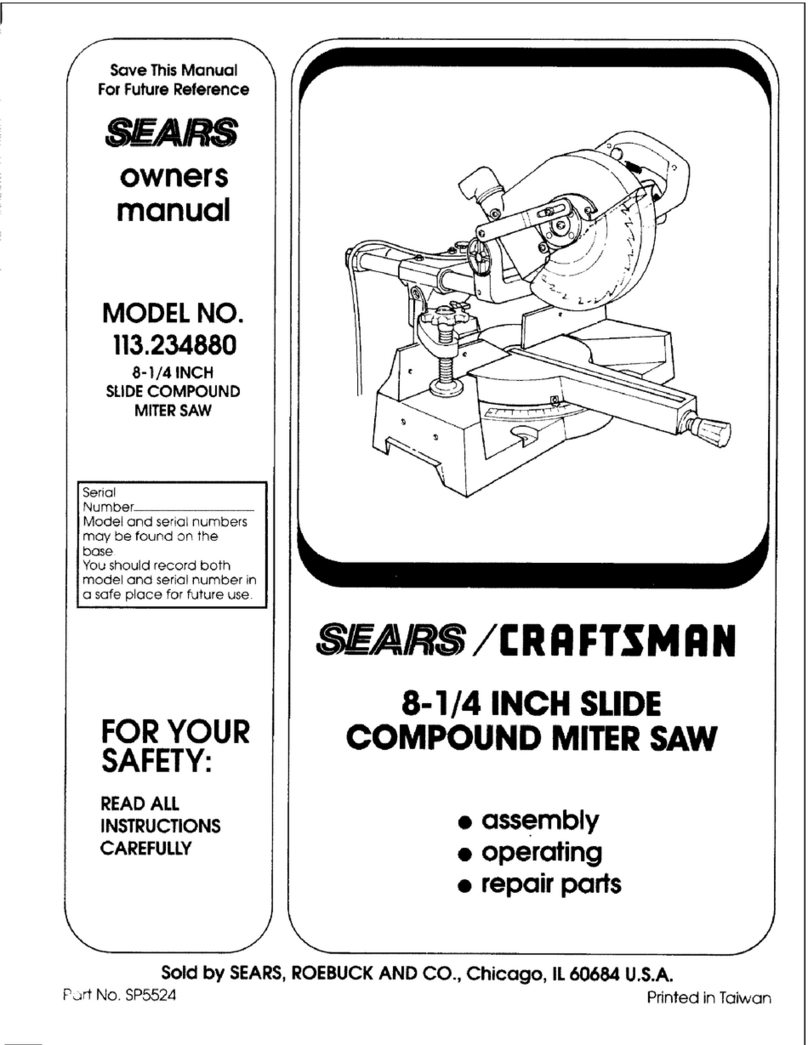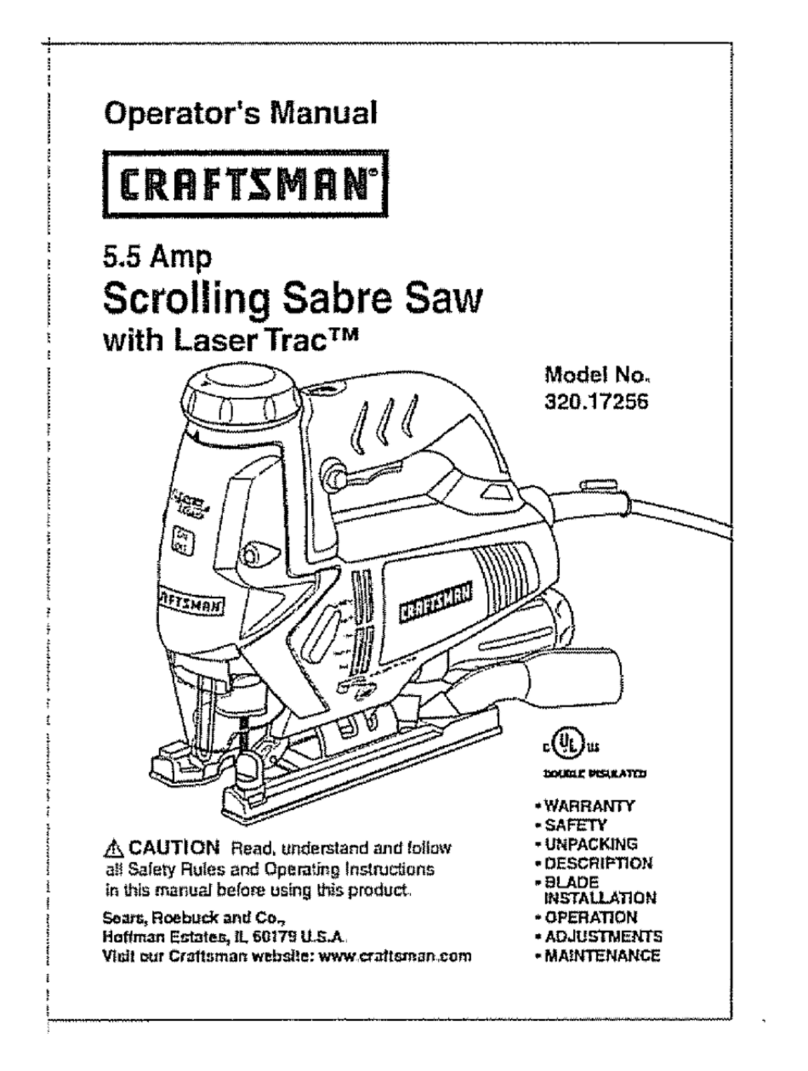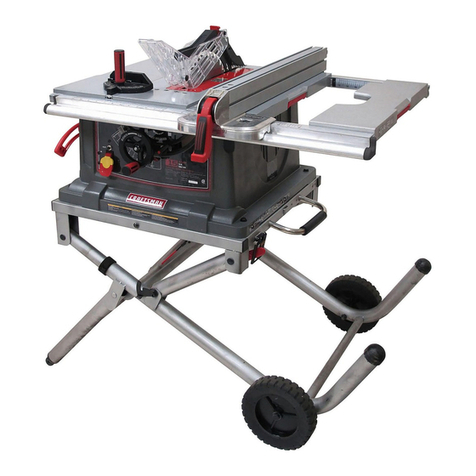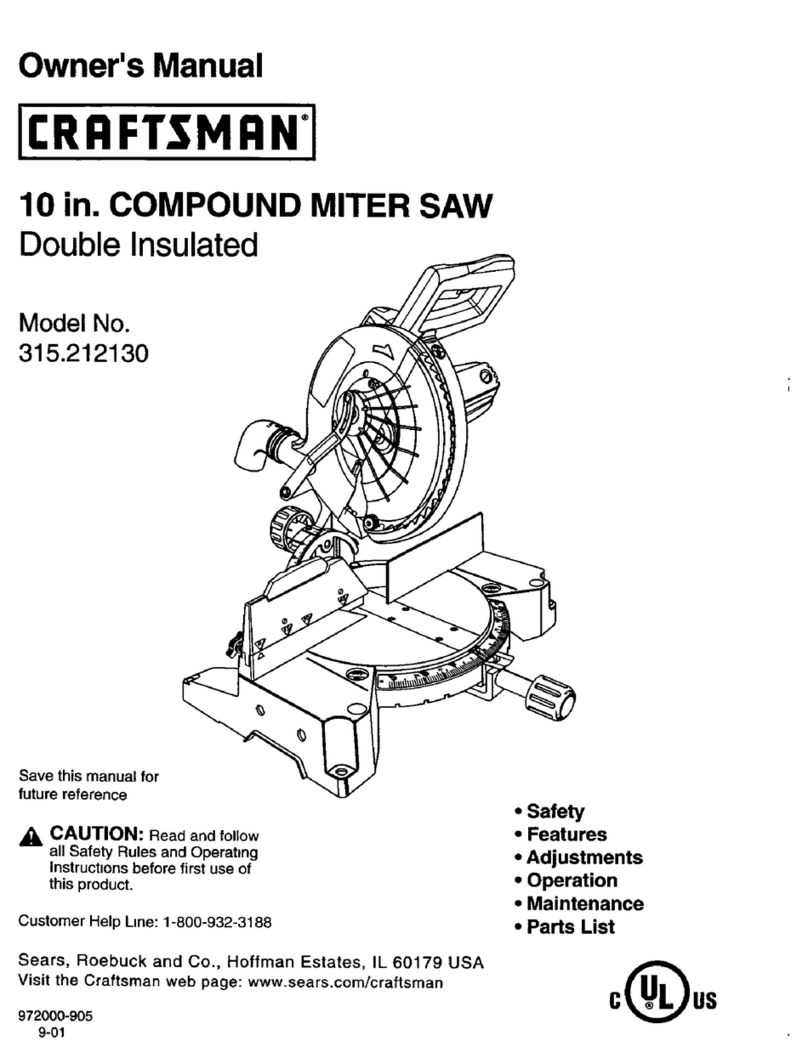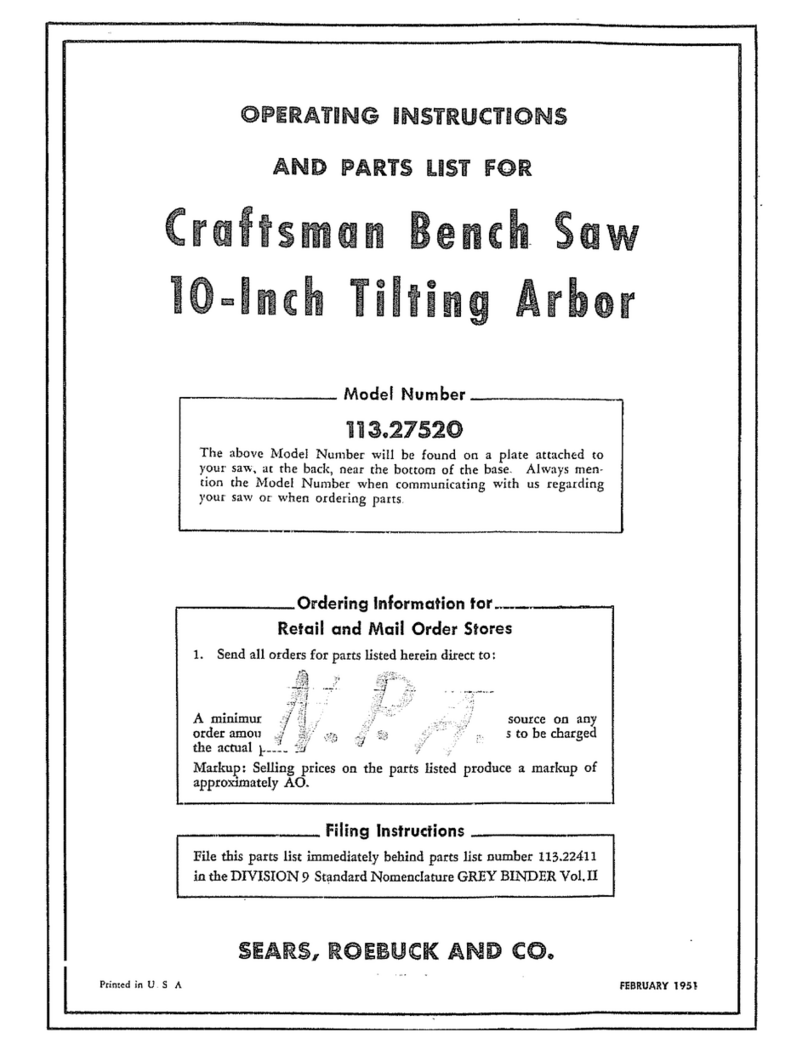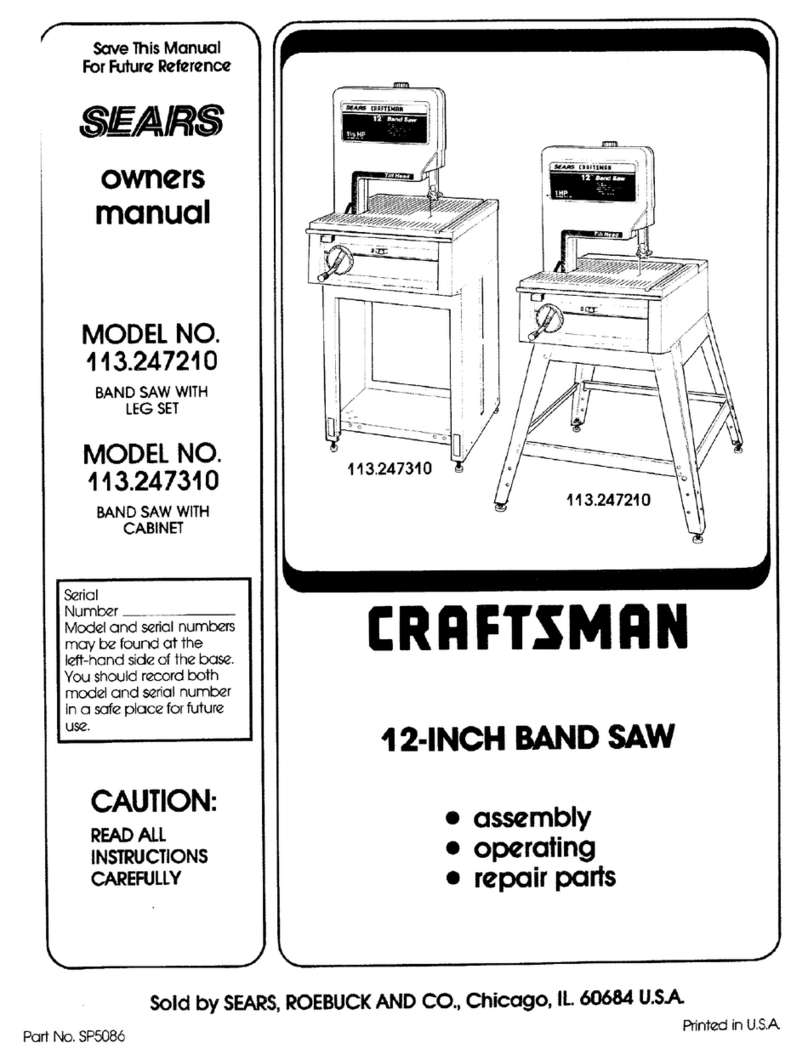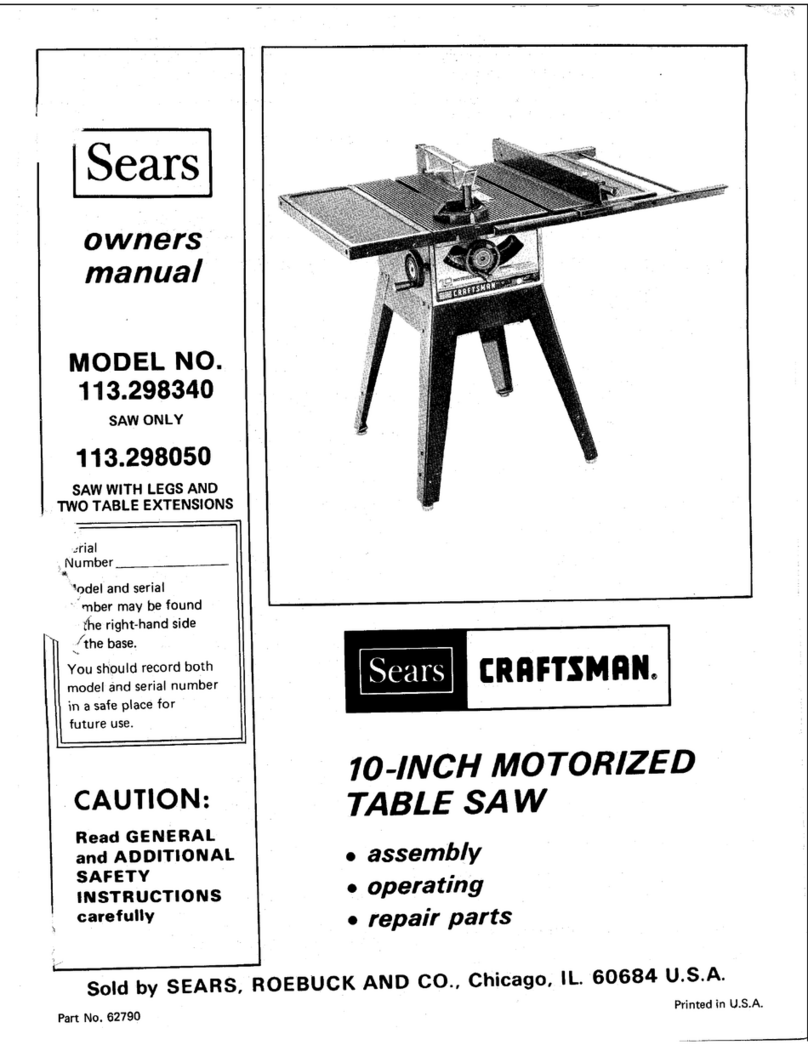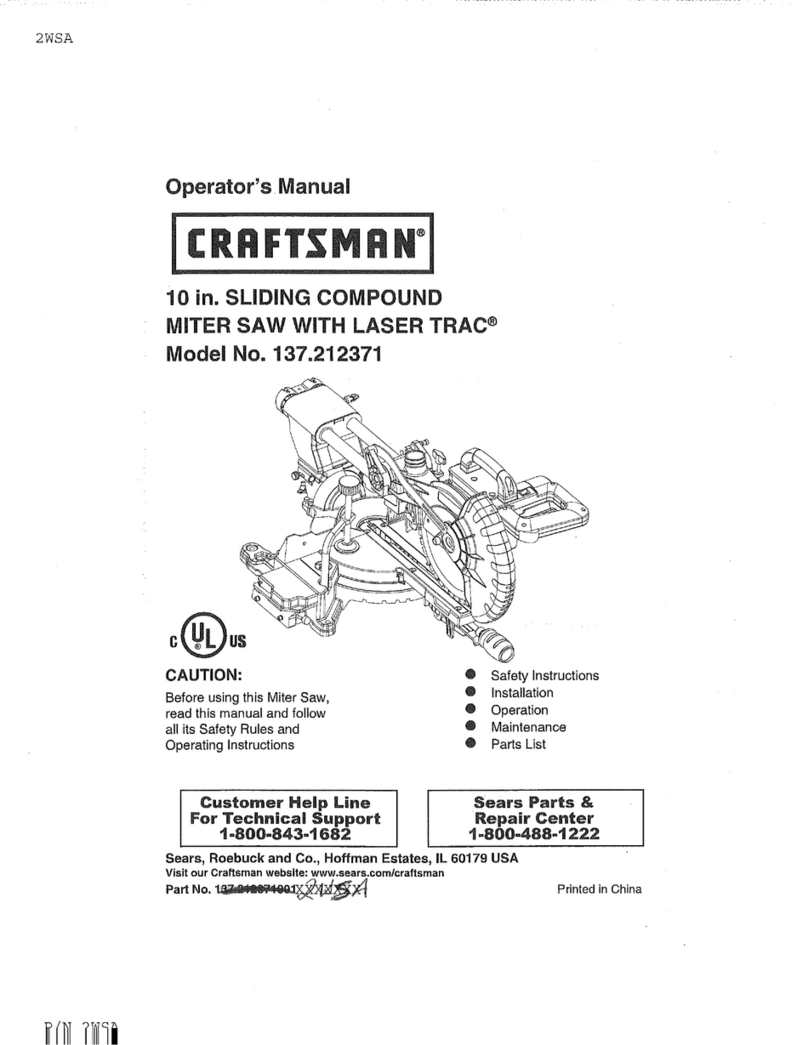button will not snap into place immediately, the motor
is
still
too hot and must be allowed to cool for a while
longer. (Anaudible click will indicateprotector
is
closed.)
3.
As
soori os the redbutton will snap into running position,
the saw moy be started and operated normally by press
-
ing the saw switch to the
"
ON
"
position.
4.
Frequent opening of fuses or circuit breakers may result
if
motor
is
overloaded, or if the motor circuit
is
fused
with a fuse other than those recommended.
Do
not use
a fuse of greater copocity without consulting the power
company.
5.
Although the motor
is
designed for operation on the
voltage and frequency specified on motor nameplate,
normal loads will be handled safely on voltages not
more than 10% above or below the narneplote voltage.
Heavy loads, however, require that voltage at motor
terminals be not less than the voltage specified on
nameplate.
6.
Most motor troubles may be traced to loose or incorrect
connections, overloading, reduced input voltage (which
results when small size wires are used in the supply
circui:) or when the supply circuit
is
extremely long.
Always check connections, load and supply circuit when
the motor fails to perform satisfactorily. Check wire
sizes and lengths with the table in the next poragraph.
WIRE SIZES
The followin
g
table lists recommended wire sizes for con
-
necting the motor to the power source. These sizes should
be maintained for trouble
-
free operotion of the saw.
Length
of
Wire
Sire
Required
Condurtor
(American Wire Gauge
No.)
120 Volt Lines 240 Volt Lines
50 feet or less No.
12
No. 14
100 feet or less No.
10
No.
12
100 feet to
150
feet No.
8
No. 10
150 feet to 200 feet No.
6
No.
8
200 feet to 400 feet No.
4
No.
6
NOTE: For circuits of greater length, the wire
size must be increased proportionately in or
-
der to deliver amplevoltage tothe saw motor.
:-..
NOTE: The seven basic
"
steps
"
that follow
-'---..
are essential in order to insure correct align-
/
ic:
;:.-;
.,
I.
:.
..
.
ment of the saw.
:.'
.
.
I
C.
2. ..
,
7
>.\,
..~.
..
_
.
..
..
;
&,
'.
3'L.
:'
4
WARNING: Make sure the power cord is
,p
..
t;.
not plugged into an electrical outlet when
2
b?,
working on the saw.
-..__.
-
-
-
STEP
ONE
-
INSTALLATION OF FRONT TABLE
1. Place the large front table board on toble supports so
that holes in board match holes in supports. (See fig
-
ure
3.)
2. Place a l/dinch plain wosher and
a
l/4-2Ox l-inch
screw
in
eoch of the seven counterbored holes located
above the table supports. One screw
is
threaded into
a "U"-clip nut mounted on the No. 2 support.
3.
Attach lockwashers and nuts to the six screws in the
table supports. Do not tighten these screws at this time.
STEP
TWO
-
CHECKING
FOR
LOOSENESS
OF
COLUMN
TUBE
IN
COLUMN SUPPORT
1.
Tighten arm latch handle
(22,
figure 20.)
2.
Grasp arm latch handle (22, figure 20) with one hand
and hold fingers of other hand at parting line between
column tube and column support. (See figure 4.)
Apply
gentle side force to the radial arm in opposing directions.
Any looseness between column and column support (in
-
dicated by arrow in figure
4)
can be felt with fingers.
3.
If looseness can be felt, at point indicated bythe arrow
in figure 4, perform operations outlined in instructions
hat follow:
NOTE Before attempting to adjust the col
-
umn tube key, the function of this adjustment
should be understood. Figure 5 shows a sec
-
tional view through the column tube support
(looking downward) at this location. By loos
-
ening the left
-
hand set screw and tightening
the right
-
hand set screw the column tube key
will be forced tighter into the column tube
keyway. Conversely, loosening the right
-
hand set screw and tightening the left
-
hand
TABLE
SUPPORT
MOUNTING SCREtAJS
